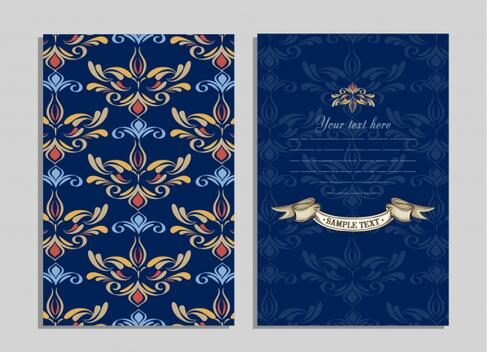“Unlock the secrets of crafting irresistible invitation letters with our in-depth guide featuring 10 proven strategies for success in 2024. From personalized messaging to compelling visuals and timely follow-ups, discover the latest techniques to master the art of persuasion and drive engagement with your invitation letters.”
Introduction:
Invitation letters serve as powerful tools for persuading individuals to attend events, participate in activities, or join organizations. Whether it’s a formal business invitation, a heartfelt personal invitation, or a captivating event invitation, crafting a compelling invitation letter requires finesse and strategic communication. In this blog, we’ll explore 10 proven strategies to master the art of persuasion through invitation letters in 2024, incorporating recent updates and best practices in the field.
Personalized Messaging:
In an era of personalization, generic invitation letters are often overlooked. Recent updates in invitation letter strategies emphasize the importance of personalized messaging tailored to the recipient’s interests, preferences, and background. By addressing the recipient by name, acknowledging their specific interests or contributions, and highlighting the benefits of attending, personalized invitation letters can significantly increase response rates and engagement.
Clear and Concise Communication:
With attention spans dwindling in the digital age, clarity and conciseness are essential in invitation letter writing. Recent updates in communication strategies stress the importance of conveying the key message clearly and succinctly, avoiding jargon or unnecessary details. By focusing on the essential information, such as the event date, time, location, and purpose, invitation letters can capture recipients’ attention and encourage prompt responses.
Compelling Visual Design:
Visual appeal plays a crucial role in grabbing recipients’ attention and conveying the invitation’s tone and theme. Recent updates in invitation letter design include the use of eye-catching graphics, vibrant colors, and innovative layouts to enhance visual appeal. Incorporating high-quality images, custom illustrations, and branded elements can elevate the aesthetic appeal of invitation letters and leave a lasting impression on recipients.
Emotional Appeal and Storytelling:
Invitation letters that evoke emotions and tell compelling stories are more likely to resonate with recipients on a deeper level. Recent updates in persuasion techniques emphasize the power of emotional appeal and storytelling in invitation letter writing. By weaving narratives, testimonials, or personal anecdotes into the invitation, writers can evoke curiosity, empathy, or excitement, compelling recipients to take action and respond positively.
Incentives and Exclusive Offers:
Offering incentives or exclusive offers can provide added motivation for recipients to accept the invitation and participate in the event or activity. Recent updates in invitation letter strategies include the inclusion of special discounts, VIP perks, or limited-time offers to entice recipients. By highlighting the value proposition and exclusive benefits, invitation letters can persuade recipients to seize the opportunity and engage with the invitation’s purpose.
Social Proof and Endorsements:
Incorporating social proof and endorsements can enhance the credibility and trustworthiness of invitation letters. Recent updates in persuasion tactics emphasize the importance of showcasing testimonials, endorsements, or social media mentions from satisfied participants or reputable individuals. By leveraging social proof, invitation letters can instill confidence in recipients and persuade them to accept the invitation based on others’ positive experiences or recommendations.
Interactive Elements and Call-to-Action:
Invitation letters that include interactive elements and clear call-to-action (CTA) prompts can drive engagement and facilitate responses. Recent updates in invitation letter design feature interactive elements such as clickable buttons, RSVP forms, or embedded multimedia content. By making it easy for recipients to respond or take action directly from the invitation letter, writers can streamline the RSVP process and encourage active participation.
Multichannel Distribution:
In a digitally connected world, leveraging multiple communication channels for invitation letter distribution can enhance reach and visibility. Recent updates in distribution strategies include sending invitation letters via email, social media platforms, messaging apps, or physical mail. By adopting a multichannel approach, writers can ensure that invitation letters reach recipients through their preferred channels, maximizing exposure and response rates.
Timely Follow-Up and Reminders:
Following up with recipients and sending timely reminders can reinforce the invitation’s importance and urgency. Recent updates in follow-up strategies emphasize the use of automated email sequences, personalized reminders, and event countdowns to keep recipients engaged and informed. By maintaining communication leading up to the event or activity, writers can mitigate the risk of no-shows and encourage attendance.
Feedback Collection and Continuous Improvement:
After the event or activity, soliciting feedback from attendees and participants can provide valuable insights for future invitation letter campaigns. Recent updates in feedback collection strategies include sending post-event surveys, conducting focus groups, or analyzing social media engagement metrics. By listening to feedback and identifying areas for improvement, writers can refine their invitation letter strategies and enhance effectiveness in future campaigns.
Conclusion:
Mastering the art of persuasion through invitation letters requires a combination of strategic communication, creativity, and empathy. By implementing personalized messaging, clear communication, compelling design, emotional appeal, incentives, social proof, interactive elements, multichannel distribution, timely follow-up, and feedback collection, writers can craft invitation letters that captivate recipients and drive desired outcomes. With careful planning and continuous refinement, invitation letters can serve as powerful tools for engaging audiences, fostering connections, and achieving success in 2024 and beyond.
Disclaimer:
The advice provided in this blog is intended for informational purposes only. While we strive to offer accurate and up-to-date information, we cannot guarantee the effectiveness or suitability of the strategies mentioned for every situation. Readers are encouraged to use their discretion and consider the specific circumstances of their invitation letter campaigns. Additionally, any actions taken based on the information provided in this blog are at the reader’s own risk. Always consult with professionals or experts in the field for personalized advice tailored to your unique needs and objectives.

